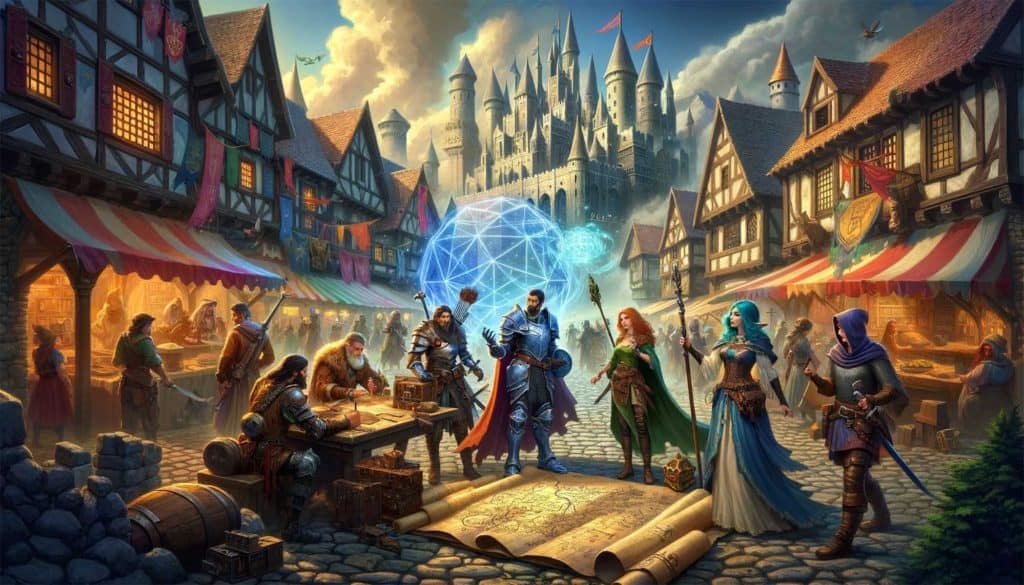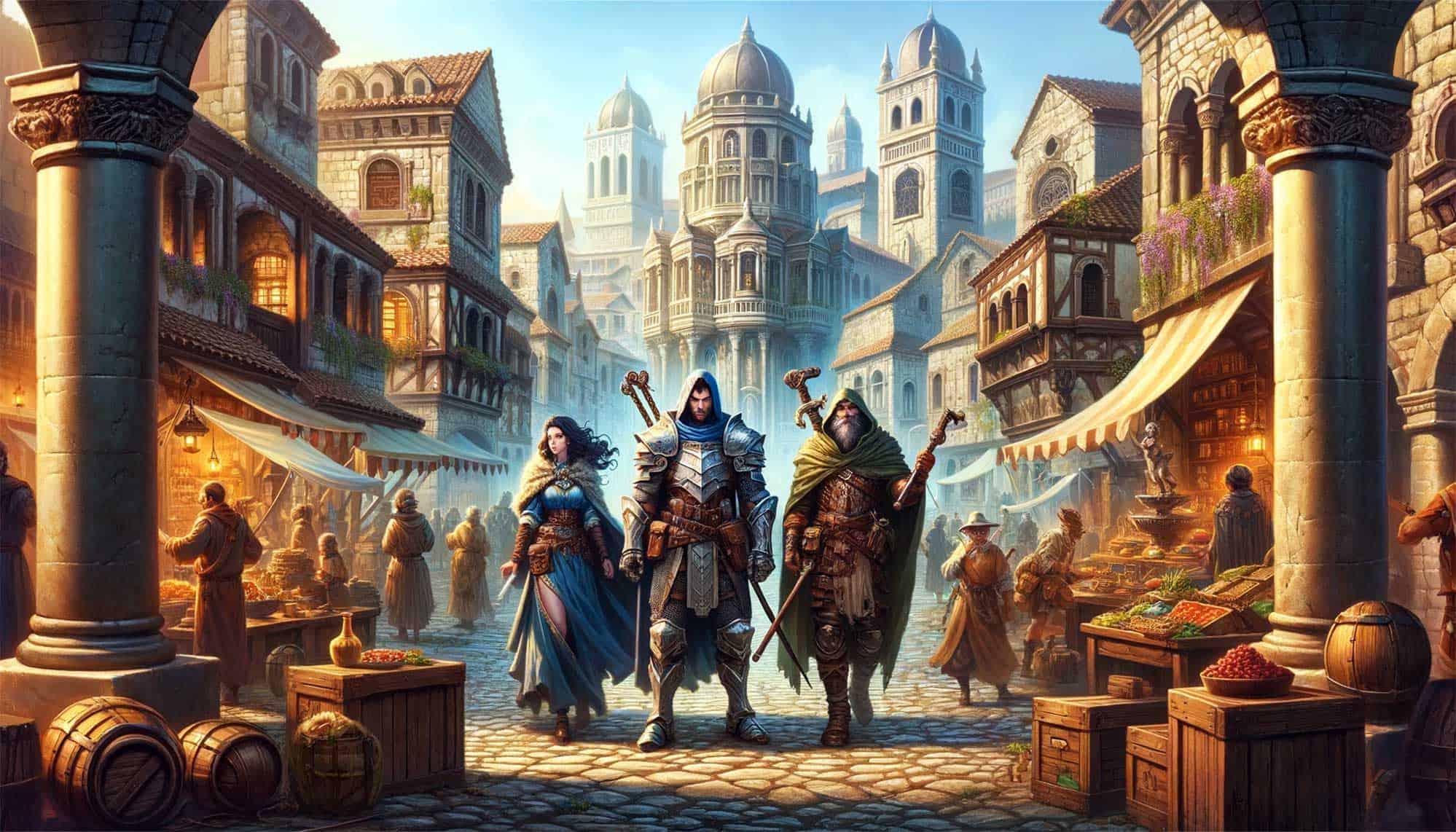Delving into the realms of Dungeons & Dragons, we embark on a journey not just through mythical landscapes but also through the annals of history itself. This game, renowned for its limitless potential in world-building and storytelling, offers a unique canvas for integrating real-world history into its fantastical settings. Why do this, you ask? The answer lies in the depth and realism that historical elements can bring to your campaign, creating a rich tapestry that resonates with both familiarity and intrigue.
In this quest, we shall explore how the echoes of the past can be woven into the narrative fabric of your D&D campaigns. By drawing inspiration from historical events, cultures, and figures, you can craft a world that feels alive, authentic, and multidimensional. Such integration not only enriches the gaming experience but also provides a platform for learning and reflection.
As we journey through this guide, remember, the pages of history are not just records of what was; they are a source of inspiration for what your campaign could be.
The Allure of Historical Accuracy in Fantasy
In the realm of Dungeons & Dragons, where dragons soar and magic reigns supreme, the inclusion of real-world history might seem like an odd companion. Yet, it’s this very juxtaposition of fact and fantasy that can make a D&D campaign truly stand out. Historical accuracy, when blended skillfully with the fantastical elements of the game, adds a layer of depth and authenticity that can captivate players like no other.
Bringing Depth to Your Campaign
One of the most compelling ways to incorporate history into your campaign is to use historical events as a backdrop for your quests and narratives. Imagine a campaign set during the tumultuous times of the French Revolution, where players navigate through a society teetering on the brink of chaos. Or a scenario inspired by the expeditions of Marco Polo, leading players on an epic journey through uncharted lands filled with wonders and perils. These historical settings provide a rich, dynamic environment that can challenge players in new and exciting ways.
Moreover, historical accuracy aids in crafting more relatable and complex characters. When characters, whether player-created or NPCs, have backgrounds rooted in historical contexts, they become more than just figures in a fantasy setting; they become reflections of real people, with desires, fears, and motivations shaped by their historical surroundings. This connection to something real and tangible adds an extra layer of immersion and emotional investment for the players.
Cultural Richness and Diversity
Integrating diverse cultures and customs from history into your D&D campaign is not only fascinating but also a wonderful opportunity to explore and celebrate the rich tapestry of human heritage. Each culture brings its own set of beliefs, traditions, and societal norms, adding layers of complexity and color to the game world. It’s a chance to transport players to the grandeur of Ancient Egypt, the scholarly pursuits of the Abbasid Caliphate, or the fierce independence of the Viking societies.
Try my AI Tabletop RPG generators...and an extensive library of content!
However, it’s crucial to approach this integration with respect and sensitivity. Authentic representation matters, and it’s important to avoid stereotypes or oversimplifications. When done right, the inclusion of diverse historical cultures enriches the gaming experience, providing players with new perspectives and a deeper understanding of the world’s many facets.

Selecting the Perfect Historical Era
Choosing the right historical period for your D&D campaign is like selecting the perfect setting for a novel. It sets the tone, influences the story, and can deeply affect the gameplay experience. The key lies in finding an era that resonates with the themes of your campaign and sparks the imagination of your players.
The Road Less Traveled: Unexplored Eras
While certain periods like medieval Europe are popular go-tos for many D&D campaigns, delving into lesser-known historical periods can offer a fresh and exciting playground for your adventures. Consider the intrigue of the Byzantine Empire, a crossroads of cultures and a hotbed of political machinations. Or venture into the Edo period of Japan, where samurai codes, artistic flourishing, and isolationist policies set a unique stage for storytelling.
⚔️ Fantasy RPG Random Tables Books
Make life as a Gamemaster easier…
If you play Dungeons & Dragons, Pathfinder, or other fantasy RPGs, this
RPG random tables series
is packed with encounters, NPCs, treasure, and more. Available in eBook or print—either way, you’ll have a wealth of adventure ideas at your fingertips.
Exploring these unexplored eras not only provides a new aesthetic and narrative landscape but also challenges players and Dungeon Masters alike to think outside the conventional tropes of fantasy. It encourages everyone to learn and discover new aspects of history, broadening their understanding and appreciation of different cultures and times.
Criteria for Choosing a Historical Period
When selecting a historical era for your campaign, consider these factors:
- Thematic Resonance: Choose an era that complements the themes of your campaign. If your story revolves around exploration and discovery, an era like the Age of Exploration might be fitting. For tales of intrigue and power struggles, the Renaissance period offers a rich backdrop.
- Player Engagement: Consider what periods your players are interested in. A campaign is most successful when everyone is excited and invested in the setting.
- Flexibility for Fantasy Elements: Ensure the era allows for the integration of fantasy elements like magic and mythical creatures without feeling too jarring or out of place.
- Resource Availability: Ensure there are enough resources available for you to research and accurately depict the era. Historical accuracy enhances immersion, but it requires some homework.
Weaving History into Your Narrative
Masterfully intertwining historical elements into your D&D campaign’s narrative is an art form. It requires a delicate balance, ensuring that the historical aspects enrich the story without overshadowing the fantasy elements or constraining the players’ creativity. Here are some techniques to seamlessly blend history into your campaign’s narrative.
Techniques for Integrating Historical Elements
After discussing the techniques for integrating historical elements, it’s crucial to emphasize the importance of balance and creativity. While historical accuracy adds depth, the heart of D&D lies in the freedom to create, imagine, and explore. As a Dungeon Master, your role is to weave these historical threads into a tapestry that still allows for the fantastical and the unexpected.
- Historical Analogues: Create parallels between real-world historical events and your campaign. For instance, a conflict in your game could mirror the dynamics of the Cold War, with espionage and a race for magical supremacy. This approach maintains the essence of history while allowing room for fantasy and player agency.
- Historically-Inspired NPCs: Draw inspiration from historical figures for your NPCs. A charismatic leader might be modeled after Cleopatra or Julius Caesar, adding depth and historical flavor to your characters.
- Cultural and Technological Authenticity: Immerse players in the era by accurately depicting the culture, architecture, and technology of the time. This doesn’t mean you can’t have fantastical elements; rather, these should be integrated in a way that feels organic to the setting.
- Plot Points Rooted in History: Use historical events as plot points or campaign milestones. For example, a campaign set in a world mirroring the Industrial Revolution could have major plot developments tied to technological advancements or social upheavals.
Encourage your players to interact with the historical elements in ways that spur their creativity. Perhaps they alter the course of a historical event, interact with a renowned figure in an unexpected way, or discover a mythical creature thought to be legend even in the historical setting. This interaction creates a dynamic and engaging story that honors history while celebrating the limitless possibilities of fantasy role-playing.
⚔️ Fantasy RPG Random Tables Books
Make life as a Gamemaster easier…
If you play Dungeons & Dragons, Pathfinder, or other fantasy RPGs, this
RPG random tables series
is packed with encounters, NPCs, treasure, and more. Available in eBook or print—either way, you’ll have a wealth of adventure ideas at your fingertips.
The Role of Research in Campaign Design
To effectively integrate historical elements into your D&D campaign, research is key. Not only does it help in creating an authentic and immersive world, but it also ensures respectful and accurate representation of different cultures and eras.
- Utilize Diverse Sources: Leverage books, documentaries, and academic articles to get a well-rounded understanding of the era.
- Focus on Details: Pay attention to the small details of daily life, politics, and culture of the period. These nuances can greatly enhance the realism and relatability of your campaign.
- Enjoy the Process: Remember, researching history for your campaign should be enjoyable. It’s a journey of discovery that can inspire and inform your storytelling in countless ways.

Conclusion
As we draw the curtains on our exploration of incorporating real-world history into Dungeons & Dragons campaigns, it’s clear that this blend of fact and fantasy offers a rich, immersive experience for both players and Dungeon Masters. The layers of depth, realism, and cultural richness that historical elements bring to the fantastical world of D&D not only enhance storytelling but also deepen players’ engagement and connection to the game.
The beauty of D&D lies in its boundless potential for creativity and storytelling. By infusing your campaigns with historical contexts and elements, you open up a whole new dimension of play. It’s an opportunity to educate, to explore diverse cultures and eras, and to see the world through a different lens—all while embarking on epic adventures in the realms of fantasy.
So, I encourage you, brave Dungeon Masters, to delve into the annals of history. Seek inspiration from the past, and let it fuel your narratives. Remember, your campaign is a canvas, and history is but one of the many vibrant colors at your disposal. Paint with bold strokes, blend the old with the new, and craft a story that will be remembered for ages to come.









